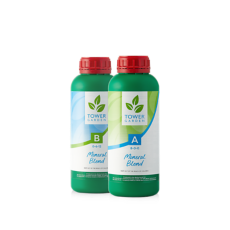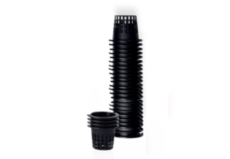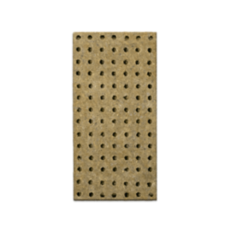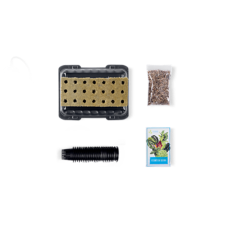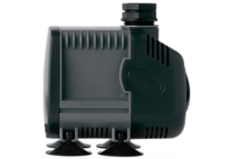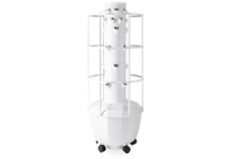Summer Tower Gardening
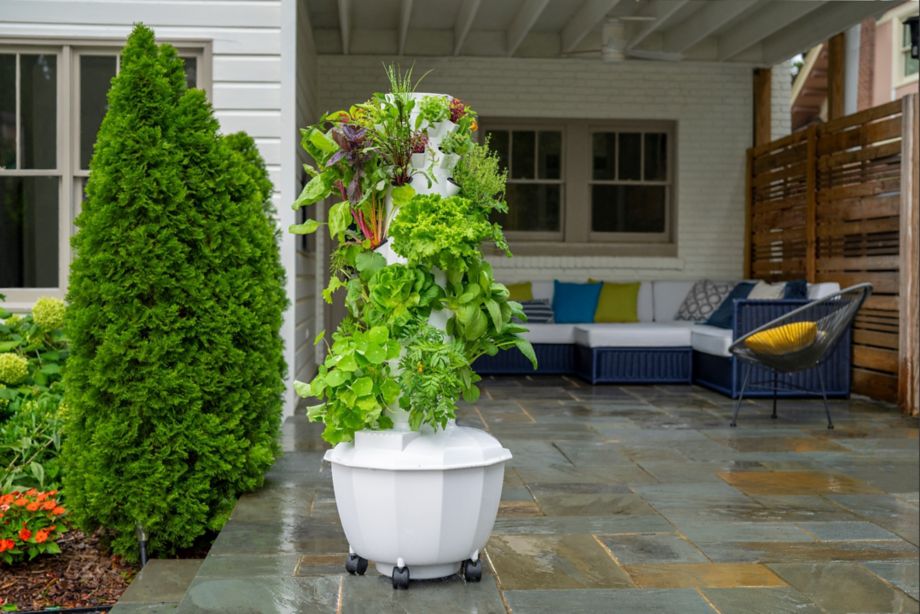
Summer can be one of the most rewarding times to grow outdoors! Tower Gardens can benefit from constant sunlight that allows for glorious bursts of growth. These months are also the best time of year to grow larger crops like tomatoes and aubergine.
While it’s fascinating to watch our gardens thrive from the favourable growing conditions that summer provides, these conditions can also introduce challenges for plants if not monitored a little more closely — including bolting, pests, diseases, and heat stress.
Following this guide can help ensure your garden stays healthy and fruitful.
Tower Tip: If you don’t plan on growing larger crops and have the space, consider taking your garden indoors with LED Indoor Grow Lights to avoid common summer growing problems.
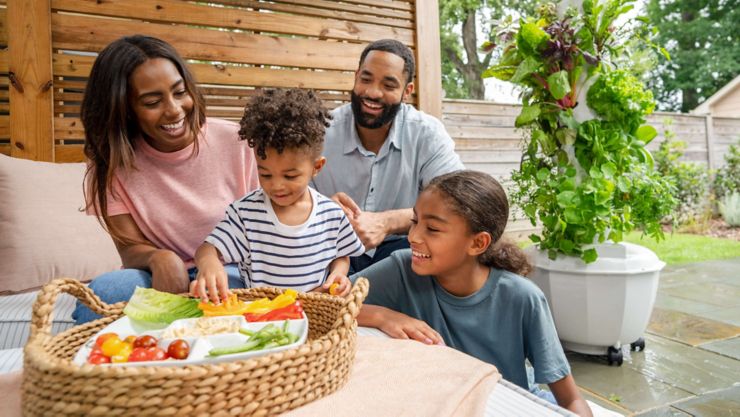
Planning for the Summer
When starting a garden, especially at the beginning of a new season, it’s crucial to begin with a solid plan. Taking time to plan your garden before summer begins will increase your garden’s chances of success.
Choose Where to Grow
When determining where to place your Tower Garden outdoors, keep in mind that most plants need 6–8 hours of full sun each day. If you live in an area where temperatures get very high, remember that your plants will also like some shade in the afternoon when the heat is at its peak.
Simply giving your plants some cover from the sun can lower temperatures by 10°F (12°C) in your garden. If only one side of your Tower Garden is receiving sunlight, be sure to rotate your unit throughout the day for even growing. This is easy with the built-in wheels on Tower Garden HOME.
Pick Heat-Tolerant Plants
Some plants take heat better than others. Generally speaking, you’ll want to stick with fruiting crops and woody-stemmed herbs, and avoid greens. If you’d like to grow fresh greens throughout the summer, we recommend growing indoors.
These 11 plants are known for their heat-tolerant natures:
This list is a great place to start. But even these plants may drop their flowers or go dormant when temperatures approach 100°F (38°C).
Gather Your Supplies
Before entering a new season, you’ll want to start strong by having the supplies you’ll need. At the very least, make sure that you’re stocked up on the following:
With that said, it’s also important to predict the challenges that come with the summer months. As you gear up for a hot few months ahead, consider investing in the following:
- Support Cage – This Tower Garden accessory helps support the growth of larger vining plants (indeterminate tomatoes, green beans, squash, etc.) that typically thrive in the summer.
Tips on Mastering the Summer
Gardening in the hot summer months comes with its challenges, but is made much easier with the right knowledge, tools, and mindset. Below are our top tips for growing an amazing garden during the summer:
Keep Your Plants Hydrated
By growing with Tower Garden — which automatically delivers water and nutrients to your plants — you’ve eliminated the tedious task of watering. But it’s still a good idea to check the reservoir twice a week to ensure it’s at least half full.
When it’s time to refill, remember to add nutrients every other time (or at half-strength). Heat causes the water to evaporate more rapidly, resulting in a more concentrated nutrient solution.
Make Sure Your Garden Stays Cool
If you experience intense summer heat, use these tactics to help keep your Tower Garden’s water temperature at the recommended 85°F (29°C) or less:
- Run your pump continuously during the hottest part of the day.
- Add frozen water bottles to the water reservoir.
- Protect your plants from midday stress by moving your Tower Garden into the shade or covering your plants with a UV-resistant Weather Protection Blanket.
Monitor Nutrients, Check Levels, and Harvest
As seasons change, so does general maintenance. During hot months, remember to:
- Only add Mineral Blend every other time you fill your reservoir tank to prevent the nutrient solution from becoming too concentrated.
- Check your Tower Garden's water level every 2–3 days to ensure it stays above the halfway mark.
- If you are growing greens and herbs, remember to harvest frequently to delay bolting and extend the growing cycle.
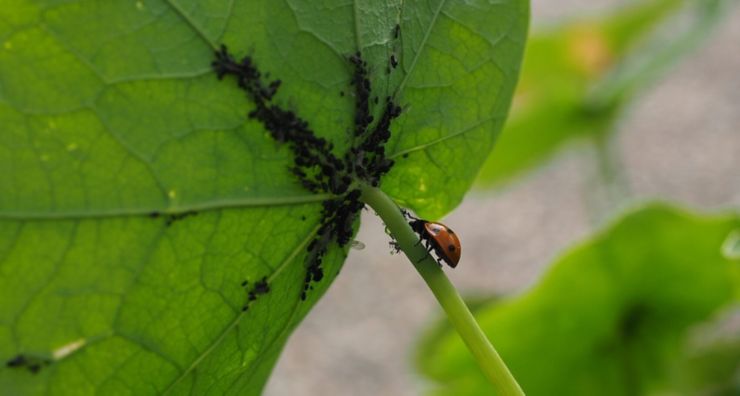
Defend Against Pests and Plant Disease
We’re not the only ones who enjoy the warm summer weather. Pests are common during this time of year, and plant diseases are much more prevalent. When it comes to pests and plant disease, prevention is usually easier and more effective than treatment. Follow these tips to help your plants stay problem-free:
- Buy only disease-resistant seeds or seedlings.
- Keep your growing environment and tools clean.
- Regularly prune your plants to improve air circulation.
- Entice beneficial insects, such as ladybugs and green lacewings, into your garden by growing pollen and nectar-producing plants.
For more information, check out our comprehensive guide to beating bad bugs, and review this post on preventing plant disease.
Replace Spent Plants
Intense summer heat encourages many plants to go to seed, a process also known as bolting. This is the process of plants entering the flowering stage in order to produce more seed. While this looks a little different depending on the plant, most send up shoots from which flowers blossom.
After this happens, many vegetables and herbs become bitter and less desirable for eating, which signals it’s time to remove and replace the crop. You can remove a plant that has gone to seed by simply pulling it out along with its net pot. You can then insert a new seedling in its place.
Tower Tip: Tomatoes, peppers, and other fruits absorb lots of water and nutrients. You can reduce stress on your fruiting crops by harvesting frequently.
Help Your Plants with Hand Pollination
It’s during summertime that you get to enjoy the yields of most fruiting crops, such as tomatoes, peppers, squash, cucumbers, watermelon, aubergine, and others. These crops, however, depend heavily on pollination to grow. If you grow outdoors, natural pollinators like bees and butterflies will do this for you.
If you’re not noticing a flurry of bee and butterfly activity around your plants, you may need to try hand pollinating your Tower Garden. To do so, follow this detailed guide on the importance of hand pollination and how it’s done.
Get Growing
Summer is one of the best seasons to grow outdoors with Tower Garden, but takes some patience and persistence. If you take time to plan your garden and follow the above tips, you’ll be one step closer to enjoying your favourite summer crops all season long.

